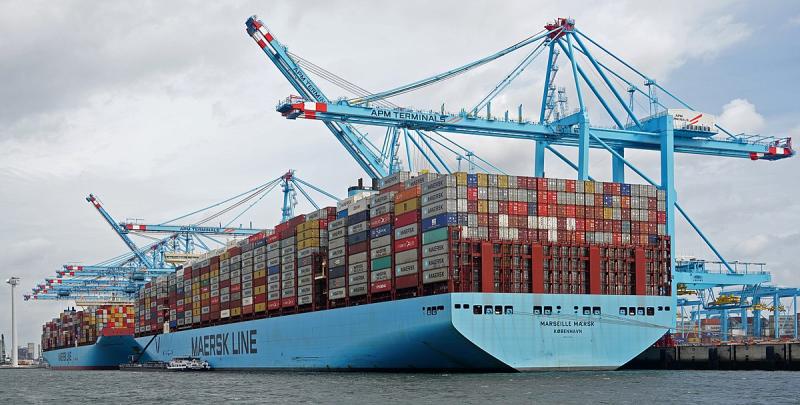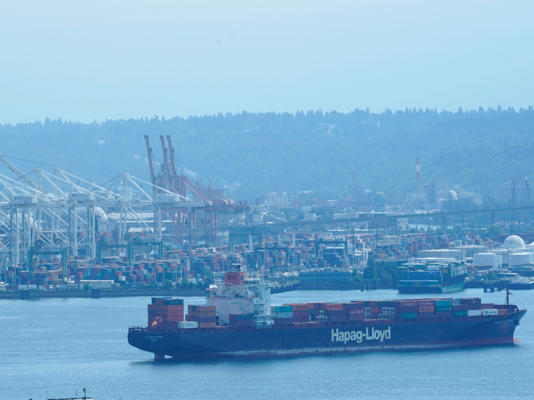Harbor pilots can make $434,000 a year, face high fatality rates, and are responsible for guiding hulking cargo ships into ports


-
- Harbor pilots are among the highest-paid city employees but it's a risky job.
- The local pilots bring a ship in from miles out at sea to within inches of the port's pier.
- Christopher Mims breaks down how packages arrive at your door within a matter of days in his book, "Arriving Today."
Harbor pilots have one of the highest-paid — but simultaneously riskiest — jobs in the transportation industry.
The average harbor pilot at the Port of Los Angeles makes $434,000 a year, but also faces a one in 20 chance of dying on the job, according to a book from The Wall Street Journal's Christopher Mims that was published in 2021. The book, "Arriving Today: From Factory to Front Door — Why Everything Has Changed About How and What We Buy," breaks down the complicated dance that brings a shipment from Asia to US buyers in a matter of days.
Harbor pilots are some of the highest-paid municipal employees and represent a crucial part of a shipment's journey. The average marine pilot in the US makes between $154,000 to $285,000 in total annual compensation, according to GlassDoor.
Any cargo ship looking to come into a port must pay local pilots to safely bring the ship in to dock. The role is highly risky, as the pilots face the dangers of being run over by a massive cargo ship, pitched overboard in rough waters, or slammed between two boats.
"Despite happening a thousand times a day all across the globe, despite myriad safety precautions, if you're a harbor pilot, doing your job can kill you," Mims writes.
The job is also incredibly high stakes and requires hyper-specialized skills. The pilot is responsible for vessels that can weigh over 200,000 tonnes and be worth over $100 million. A harbor pilot brings a ship in from miles out at sea to within mere inches of its unloading spot alongside the pier.
The harbor pilot first approaches the massive skyscraper-sized cargo ship from a 55-foot long speedboat, according to Mims, who described how LA port harbor pilot Captain John Betz maneuvered the Netherlands, a Chinese-owned ship from Cosco Shipping Lines. From the speedboat, the pilot must climb a rope ladder onto the freighter — often while both boats are pitching in opposite directions. The move represents one of the most dangerous moments during the entire process.
"I've been chased up the ladder by the boat," Craig Flinn, another harbor pilot, tells Mims. "The percentage of survival is minimal if you go in the water in heavy seas, even with a life vest," he said.
Once aboard the freighter, Mims explains the pilot is given a sheet detailing every little element of the ship and the obstacles it faces on its course into port. Without touching a single control on the ship, Betz directs every movement of the Netherlands via verbal commands to the crew by using his iPad, a combination of GPS and navigational beacons, the ship's onboard automated system, as well as his own judgement. The pilot also directs the crew operating the tugboats that attach to each side of the ship as it comes into the port.
Once the vessel is close enough, the freighter is maneuvered predominantly using its residual momentum and the slow pull of the tugboats.
Mims calls the final steps of turning the hulking ship into its spot on the pier "the equivalent of a stunt driver parallel parking a car in a spot that's just long enough for it, after coming in at high speed, throwing over the wheel, and skidding sideways to within an inch of the curb, tires smoking."
A harbor pilot's job is complete once the ship is safely tucked away in its berth. Ultimately, harbor pilots represent a little-known, but crucial part of the supply chain. Around 90% of US goods arrive by ship.
OFF-TOPIC COMMENTS WILL BE DELETED WITHOUT WARNING.



The accident today of the vessel hitting a bridge in Baltimore showed a number of things, the power of the vessel, the destructive power if she is out of control, power and it can't be controlled which is what happened today. Finally the work of the captain also known as the Master, the crew and the port pilots saved many lives with there quick action for which they have all trained for numerous times.
The title of this article shows as public employees the pay of port pilots which is huge but so is the danger and the number of years, experience, licenses that they must have to attain this position.
Take a look at the video at the end of the article and let me know if you want to try out for the job....
Take a look at the video at the end of the article and let me know if you want to try out for the job....
Too risky for me-- and probably for a lot of other people.
*Actually a lot of people looking for a second source of incomer now-a-days -- one that pays very well and is a lot less risky might prefer something like Only Fans.
LOL, I'm sure.